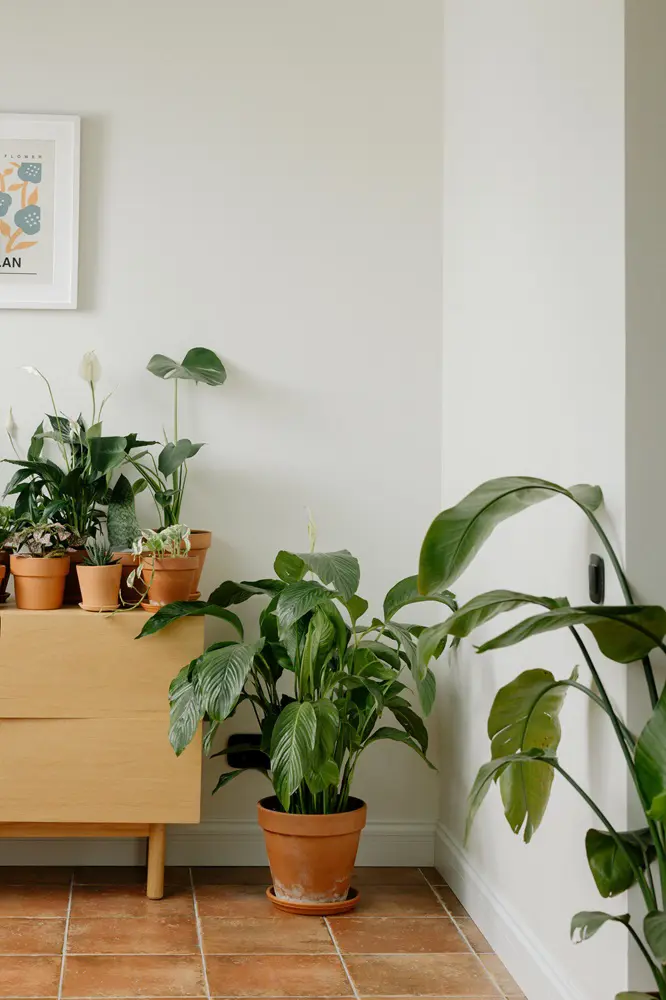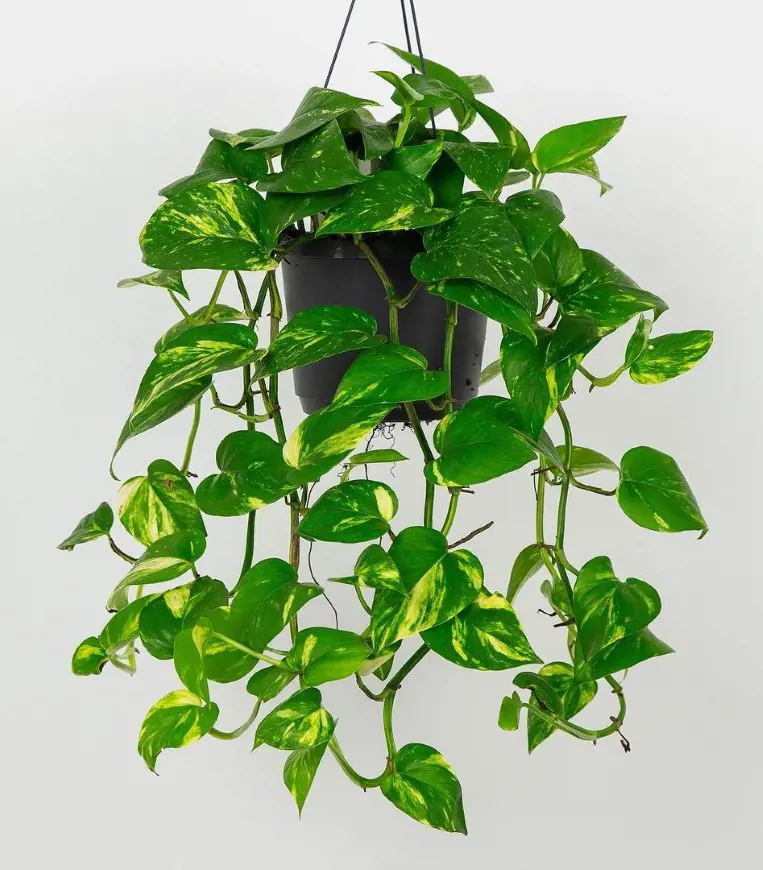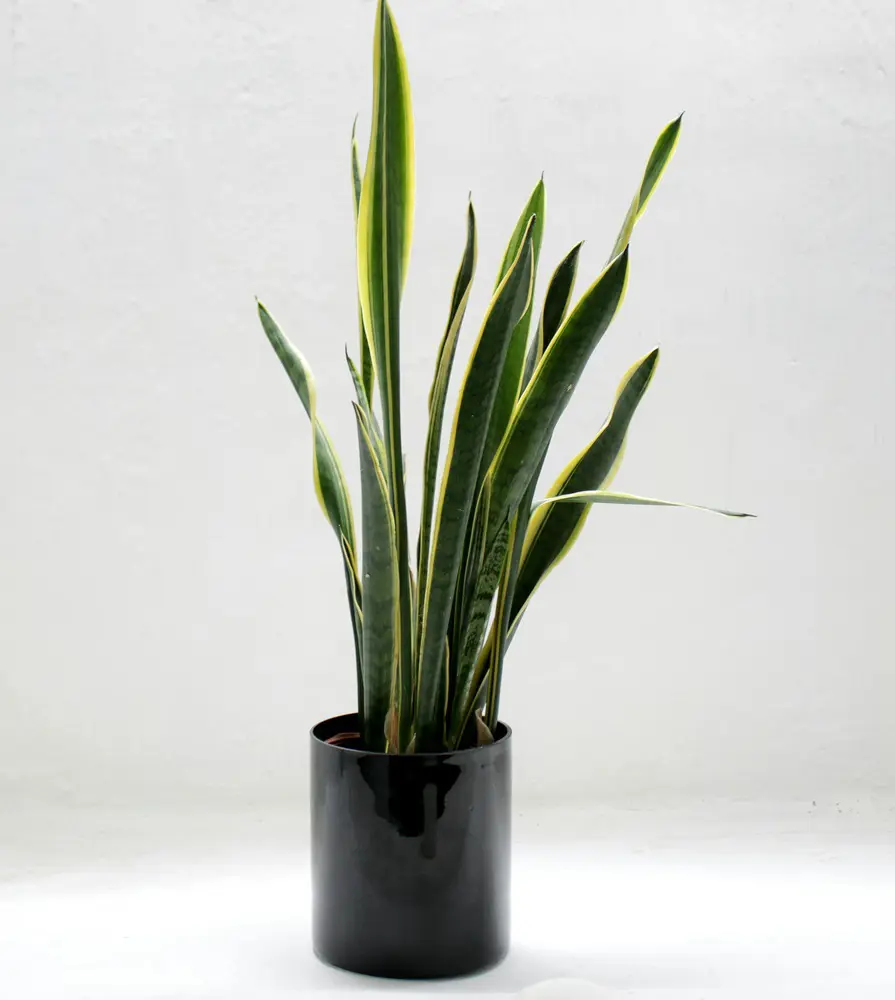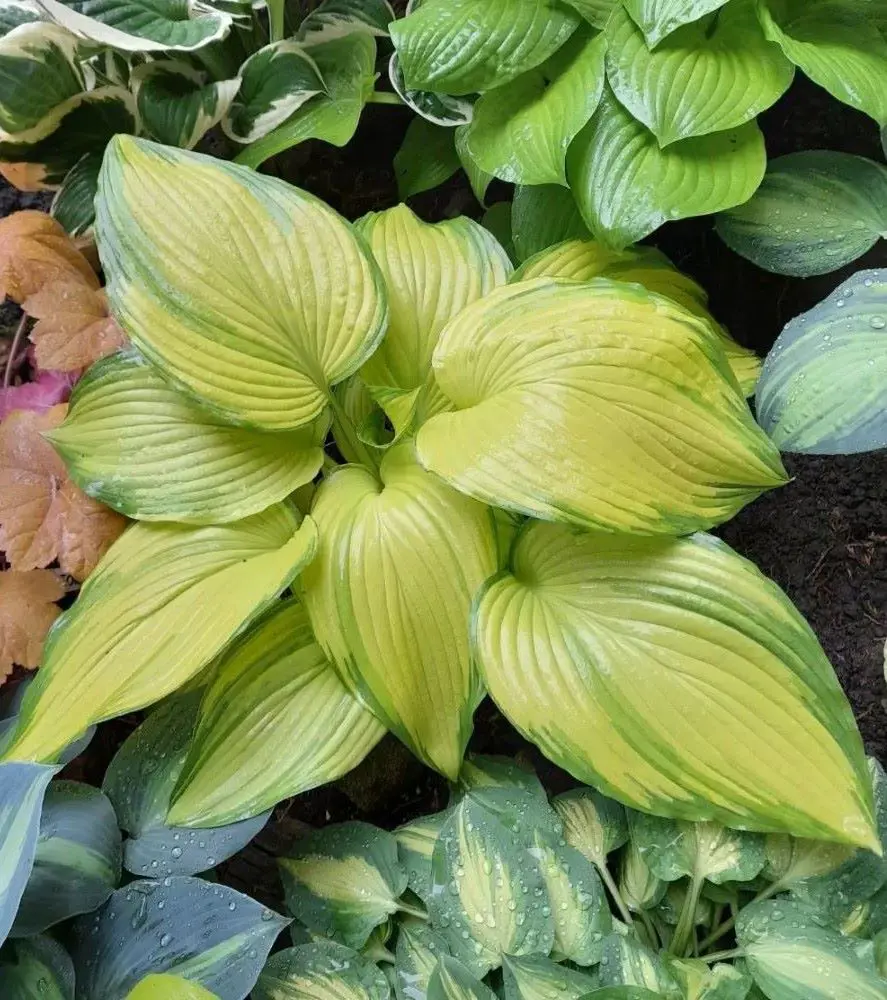Tips To Fix Yellow Pothos Leaves
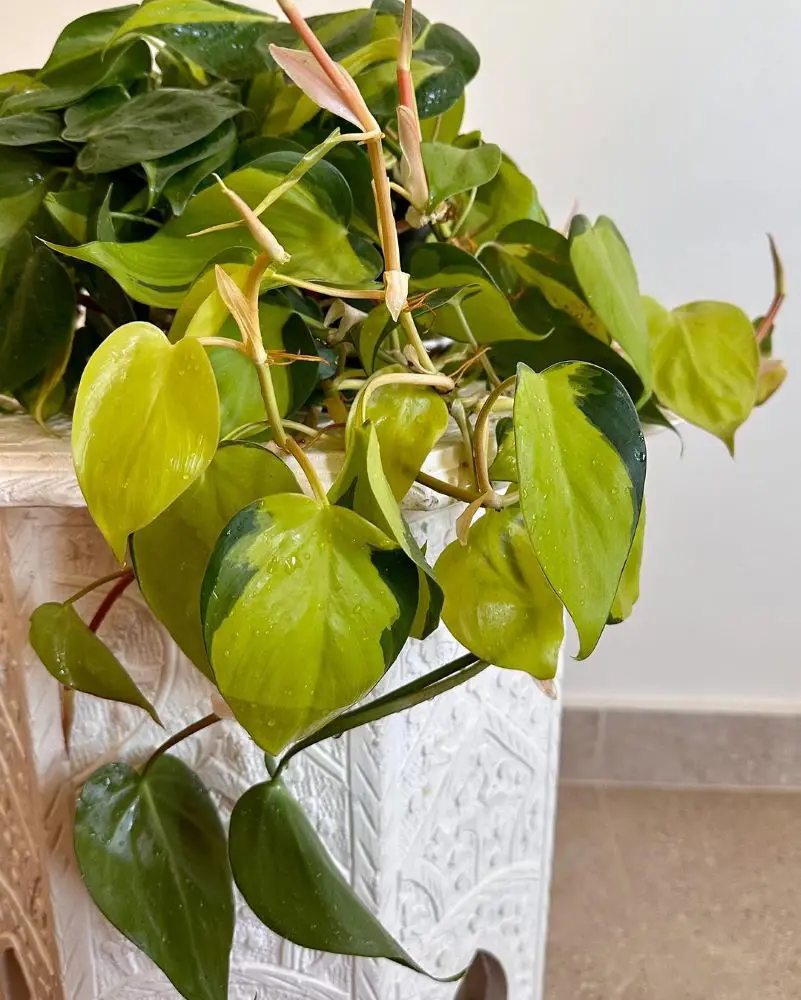
This post may contain affiliate links. If you make a purchase through links on our site, we may earn a commission.
The Pothos is a flowering plant belonging to the Solomon Islands in the South Pacific. Belonging to the family Araceae, the vine is primarily grown indoors as a houseplant.
While yellowing leaves in pothos plants is common, its effect on the plant varies in severity. If left untreated, it could lead to the pothos losing its leaves.
Pothos Plant Overview
| Scientific Name | Epipremnum aureum |
| Common Names | Pothos, Golden Pothos, Devil's Vine, Devil's Ivy |
| Family | Araceae |
| Type | Vine |
| Size | 20–40 Ft. (Height), 3–6 Ft. (Width) |
| Sun Exposure | Full Sun, Partial Shade |
| Soil Type | Moist, Well-drained |
| Soil pH | Neutral To Slightly Acidic |
| Bloom Time | Rarely Flowers |
| Colors | Golden, Yellow, Purple |
| Origin | Asia |
| Toxicity | Toxic To Dogs And Cats |
Understanding The Causes
Yellowing leaves in Pothos plants are not necessarily a sign of disease. More commonly, they indicate environmental stress caused on the plant by factors like lighting, watering, and nutritional issues.
Alternatively, yellow leaves can also indicate a fungal or bacterial infection in pothos plants.
Watering Issues
Pothos may develop yellow leaves as a result of both underwatering and overwatering. Overwatering can lead to root rot, causing the leaves to yellow and wilt. Conversely, underwatering can cause dehydration and nutrient imbalances, manifesting as yellowing foliage.
Improper drainage exacerbates these problems by trapping excess moisture in the soil. Additionally, poor water quality has also been taken as a cause of the condition in Pothos.
Lighting Problems
Insufficient light causes chlorophyll degradation, leading to yellowing foliage in Pothos. Placing the plant in dimly lit areas or away from windows deprives it of essential light for photosynthesis.
Likewise, exposure to direct sunlight can also scorch Pothos leaves, causing yellow or brown patches.
Nutritional Deficiencies
Yellow leaves in Pothos plants can indicate various nutrient deficiencies, primarily nitrogen, potassium, and iron. Nitrogen deficiency impedes chlorophyll production, resulting in pale leaves.
At the same time, lack of potassium also disrupts photosynthesis and nutrient transport, leading to yellowing along leaf margins and tips. Moreover, iron deficiency manifests as interveinal chlorosis, with paling between leaf veins due to impaired chlorophyll synthesis.
Other Potential Causes
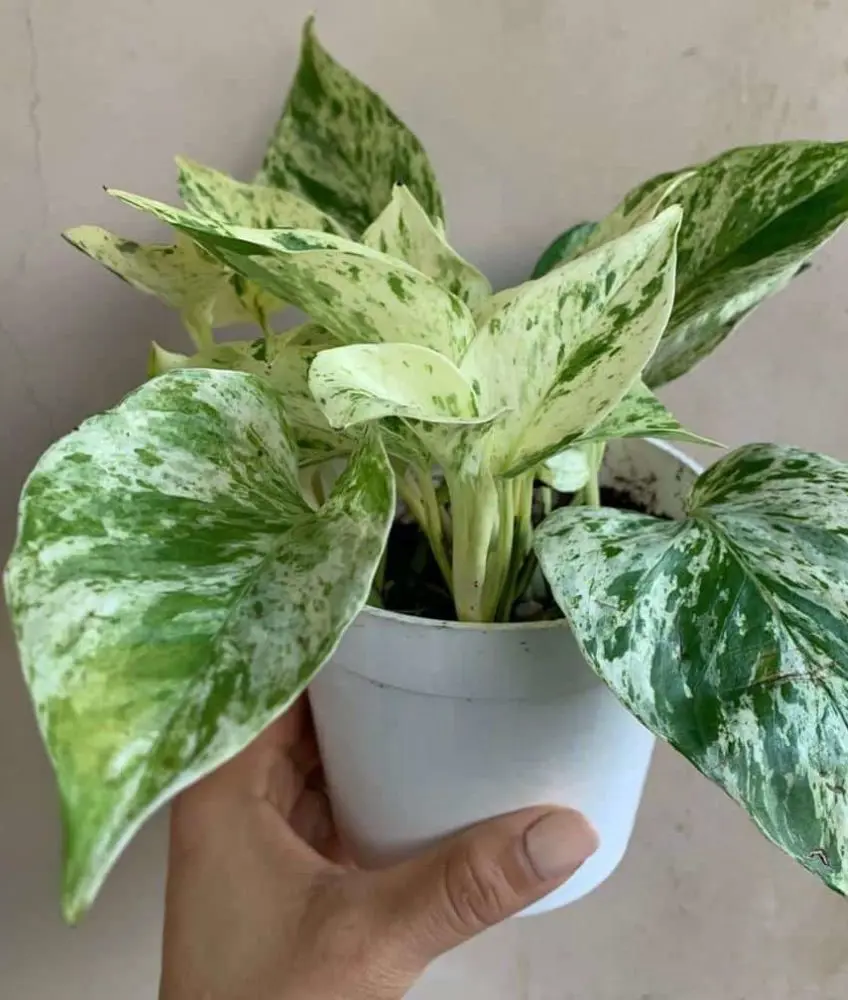
Yellow leaves in Pothos can result from different conditions, not limited to factors like water, light, and nutrients. Other common causes that can lead to paling or discoloration in those plants include:
- Plant diseases like leaf spot disease or bacterial wilt disease
- Environmental conditions, such as manganese toxicity or ethylene damage
- The old age of the plant
- Pest infestations
- Sudden temperature fluctuations
- Poor air circulation
- Excessive dust accumulation
- Chemical exposure from cleaning products, and more.
Identifying The Actual Cause

Yellowing leaves in Pothos plants are identifiable by their faded green color, progressing to a pale yellow hue. The discoloration typically starts at the edges or tips of the leaves and spreads inward.
Additionally, affected leaves may become limp or wilted, indicating underlying issues such as overwatering or nutrient deficiencies.
This step-by-step guide will help you diagnose the cause of yellowing leaves in Pothos plants.
- Visual Inspection: Examine the plant for yellowing leaves, noting the pattern and extent of discoloration.
- Check Soil Moisture: Insert a finger into the soil to assess moisture levels. If it feels excessively wet, overwatering might be the cause.
- Evaluate Lighting Conditions: Assess the plant's placement for adequate light exposure. Yellowing leaves due to insufficient light often occur on lower or inner foliage.
- Inspect Drainage and Potting Mix: Ensure proper drainage in the pot and assess the quality of the potting mix. Poor drainage can lead to waterlogged soil and root rot.
- Consider Nutrient Deficiencies: Look for specific symptoms of nutrient deficiencies, such as chlorosis or leaf discoloration. Adjust fertilization accordingly.
- Check for Pests: Examine both sides of leaves for signs of pest infestations such as webbing, tiny insects, or stippling.
- Assess Environmental Factors: Consider other environmental stressors like temperature fluctuations, drafts, or exposure to chemicals.
- Review Care Routine: Evaluate your watering schedule, light exposure, and fertilization regimen to ensure they align with Pothos plant requirements.
- Make Necessary Adjustments: Based on your observations, adjust watering frequency, lighting conditions, or nutrient supplementation as needed.
- Monitor Progress: Regularly monitor the plant's condition and observe any changes in leaf color or overall health. Adjust care practices accordingly to promote recovery.
Treatment Options
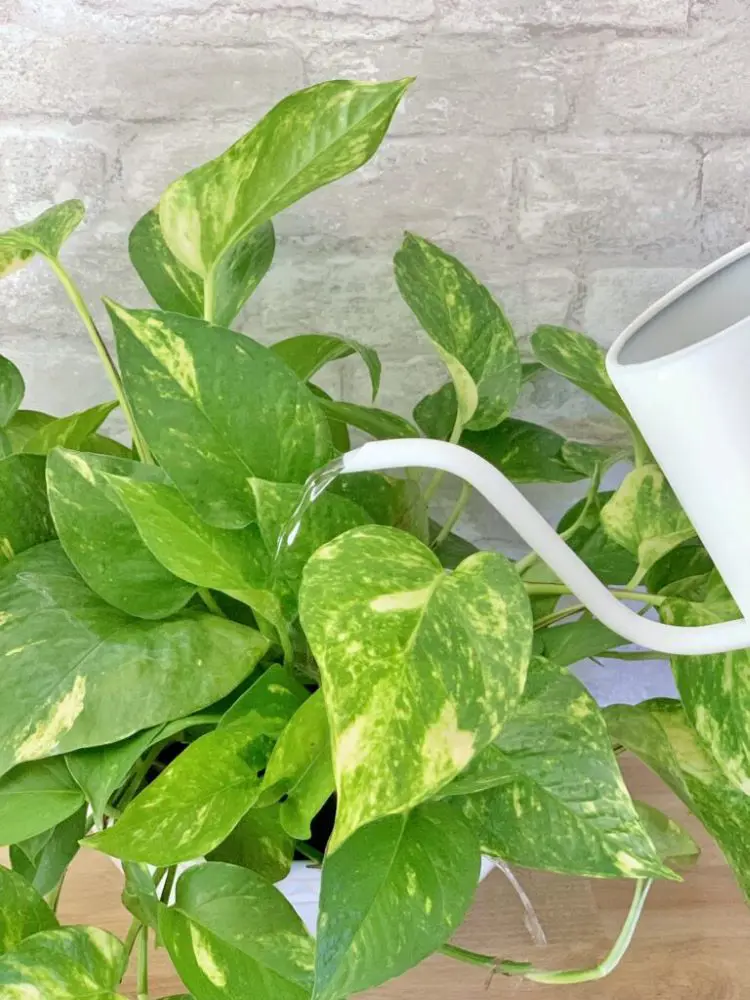
Yellow leaves in Pothos plants are treatable depending on the underlying cause. Issues like overwatering, lighting, or nutrient deficiencies can be corrected through appropriate adjustments in care.
However, if the yellowing is due to severe disease or pest infestation, treatment may be challenging and may require more intensive measures.
1. Adjust Watering Practices
If the Pothos is overwatered, allow the soil to dry partially between waterings to prevent root rot. Trim away any affected leaves. For underwatering, increase watering frequency, ensuring the soil is evenly moist but not waterlogged.
Additionally, mist the foliage to increase humidity. Monitor the plant's response, maintaining a balanced watering routine to promote healthy growth. Adjustments should be gradual to avoid shocking the plant.
2. Provide Bright, Indirect Light
Relocate the plant to a spot with access to bright, indirect sunlight. Avoid direct sunlight as it can scorch the leaves.
Moreover, rotate the plant periodically to ensure even light exposure. If natural light is insufficient, supplement with artificial grow lights. Over time, the plant should recover, displaying vibrant green leaves in its preferred lighting conditions.
3. Feed Nutrient-Rich Fertilizer
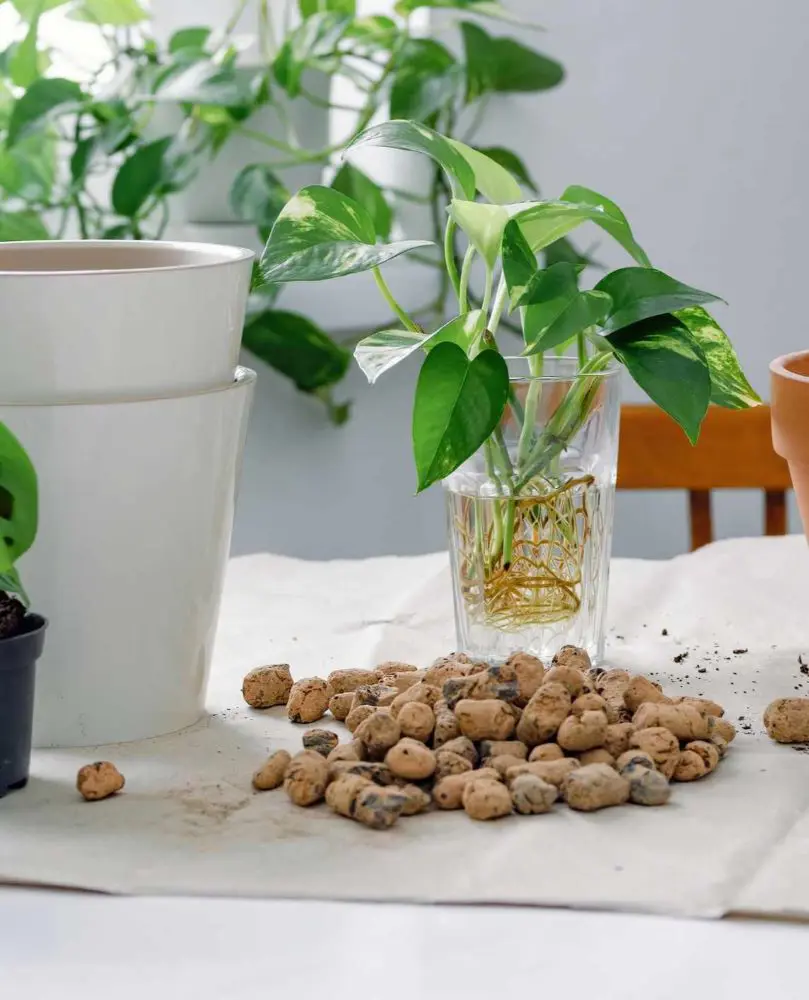
To treat yellow leaves in Pothos plants caused by nutrient deficiency, apply a balanced, water-soluble fertilizer formulated for houseplants. Ensure the fertilizer contains essential nutrients like nitrogen, potassium, and iron.
Follow the manufacturer's instructions for application rates and frequency. Additionally, adjust the pH of the soil if necessary to optimize nutrient uptake.
4. Other Treatment Methods
In addition to common techniques like proper watering, lighting, and fertilizing, there are several more ways to cure Pothos plants. Some of them are listed below:
- Pruning: Remove yellow leaves to prevent the spread of any underlying issues and promote new growth.
- Humidity Control: Increase humidity levels by misting the leaves or using a humidifier to prevent leaf dehydration.
- Repotting: If root-bound or if the soil is depleted, repot the plant with fresh, well-draining soil to rejuvenate its health.
- Pest Management: Treat any pest infestations promptly with appropriate insecticides or natural remedies to prevent further damage.
- Adjusting Temperature: Ensure consistent temperatures within the plant's preferred range to avoid stress-induced yellowing.
- Cleaning: Wipe leaves gently with a damp cloth to remove dust and debris, which can hinder photosynthesis and lead to yellowing.
General Care Tips
The Pothos plant care involves providing the right conditions suitable for the shrub to grow. Gardeners should consider factors like pruning, potting, and fertilizing to maintain the overall well-being of the plant. Here are a few variants to look after for the proper care of Pothos:
Light
Pothos plants thrive in indirect sunlight but can also tolerate low-light conditions. However, they may not grow as vigorously in low light.
Avoid direct sunlight as it can scorch the leaves.
Water
Pothos prefer slightly moist soil but are quite forgiving if you forget to water them occasionally. Allow the soil to dry out slightly between waterings to prevent overwatering.
Water thoroughly when the top inch or so of soil feels dry.
Soil
Well-draining, rich potting soil is ideal for Pothos plants. A mix of peat moss, perlite, and vermiculite works well.
Ensure the pot has drainage holes to prevent waterlogging.
Support
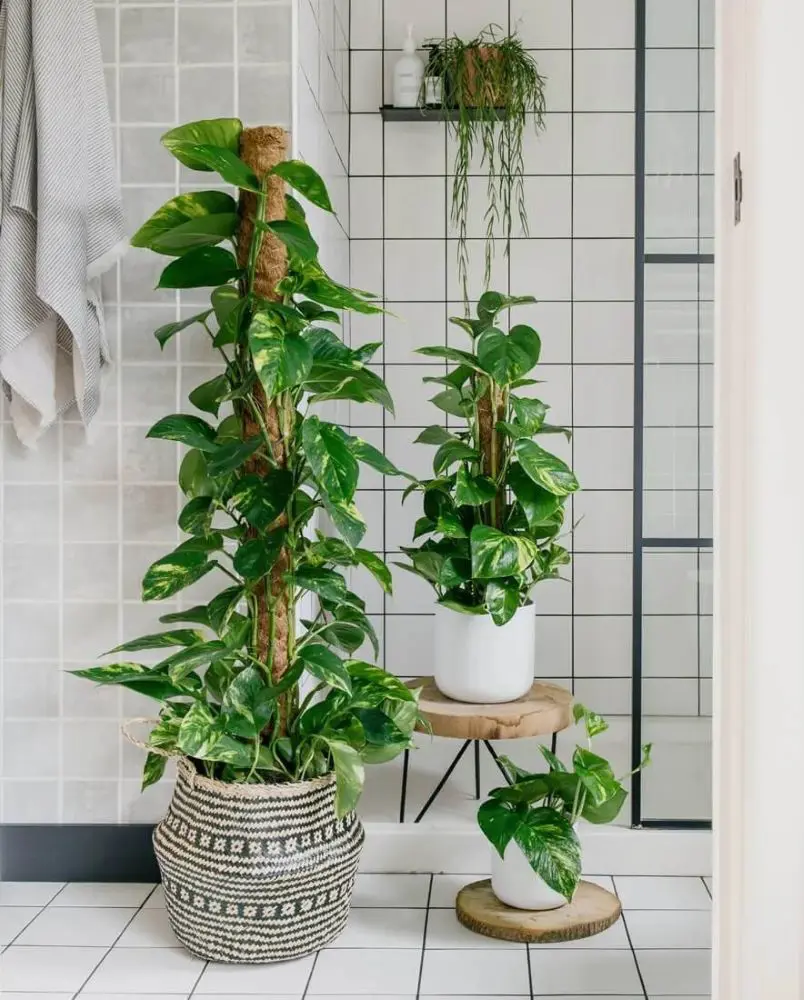
Provide a support structure such as a trellis or stake for the Pothos to climb if you want it to grow upward. They can also be left to trail over the edges of pots or hanging baskets.
Temperature
Pothos plants prefer temperatures between 65-85°F (18-29°C). They are vulnerable to extremely hot or cold conditions, even causing the plant's death in some cases.
Fertilization
Feed these plants with a balanced liquid fertilizer diluted to half strength every 4-6 weeks during the growing season (spring and summer).
Reduce or stop fertilizing during fall and winter when growth slows down.
Pruning
Regular pruning helps maintain the Pothos plant's shape and encourages bushier growth. Trim back overgrown vines and remove any yellow or dead leaves.
When To Seek Help
If yellow leaves persist despite adjusting watering, light, and fertilization, seeking professional help for Pothos plants is wise. Severe yellowing across multiple leaves, accompanied by leaf drops or unusual patterns, could indicate underlying issues like root rot, nutrient deficiencies, or pests.
A professional diagnosis can identify the exact problem and provide targeted solutions. Additionally, if you suspect a more complex issue, consulting with a horticulturist or plant specialist ensures timely and effective intervention.
If this condition is left untreated without seeking professional help, several detrimental consequences can occur. The underlying issue causing the yellowing may worsen, leading to widespread leaf loss, stunted growth, or even plant death.
Moreover, prolonged stress from untreated issues can weaken the plant's overall health and resilience. Therefore, timely intervention by a professional can diagnose the issue accurately and implement effective treatments to restore the plant's health.
Conclusion
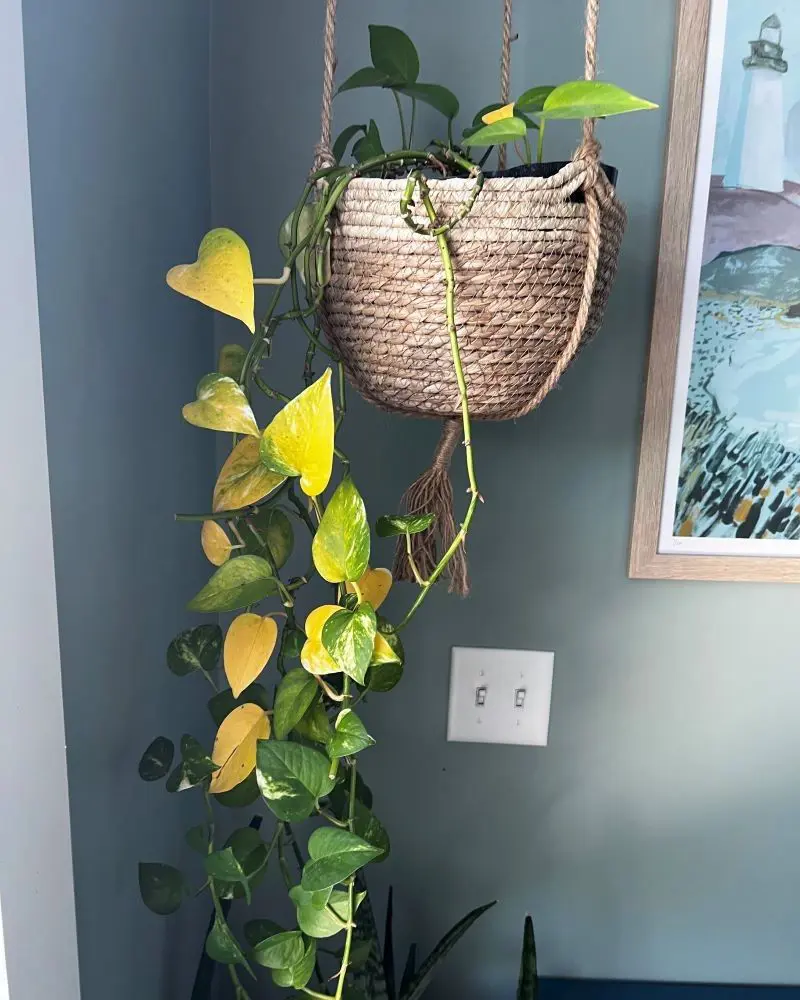
To summarize the issue, yellowing leaves in Pothos plants can result from various factors, including overwatering, underwatering, inadequate light, nutritional deficit, pests, diseases, and more. Pests like spider mites or mealybugs may sap nutrients from leaves, causing them to yellow. Likewise, fungal or bacterial infections can also contribute to leaf yellowing.
To treat this underlying problem, adjust watering frequency and light exposure, fertilize with balanced nutrients, and address pest or disease issues with appropriate remedies.
Moreover, pruning damaged leaves and repotting in fresh soil may be necessary for severe cases. Seeking professional help ensures accurate diagnosis and tailored solutions for restoring the Pothos plant's health and vibrancy.
Recent posts
Plant Care
Plant Care
How To Take Care Of An Orchid Plant? 11 Tips And Tricks
If you love gorgeous orchids but are worried they're too high-maintenance, don't worry. This guide is like a cheat sheet for orchid newbies. Forget fancy words and confusing schedules — we're talking about how to take care of an orchid pla...
Plant Care
How To Grow and Care For Peace Lily Plant
The Peace Lily is an indoor plant that is most valued for its beautiful and shiny green leaves as well as the white blooms. Hard and tolerant, it’s naturally a low-maintenance addition to your plant collection. If you are confused, let us tell ...
Plant Care
Pothos Plant Care And Growing Guide
Adding a Pothos plant (Devil’s Ivy) to your home benefits the environment and aesthetic of your personal space. It's easy to maintain and is loved for it's ability to enhance indoor air quality by removing toxins like formaldehyde, benzene, and...
Plant Care
Snake Plant Care and Growing Guide
Snake plants require low maintenance, and low light and are almost impossible to kill, making them a perfect plant for beginners and seasoned gardeners. In this guide, we will explore essential care tips and optimal growing conditions for snake plant...
Plant Care
How To Plant, Grow and Care Majesty Palm
The majestic palm, scientifically known as Ravenea rivularis, makes for a stunning indoor tree with its lush and grand fronds. Originating from Madagascar's river banks, this resilient houseplant is cherished not only for its beauty but also for its ...
Plant Care
How To Grow And Care For A Hosta Plant
Hosta plants are widespread perennials, often grown for their beautiful and diverse foliage. They are extremely easy to care for and can thrive in various conditions, particularly shade or semi-shade. These hardy plants can last for many years and re...

